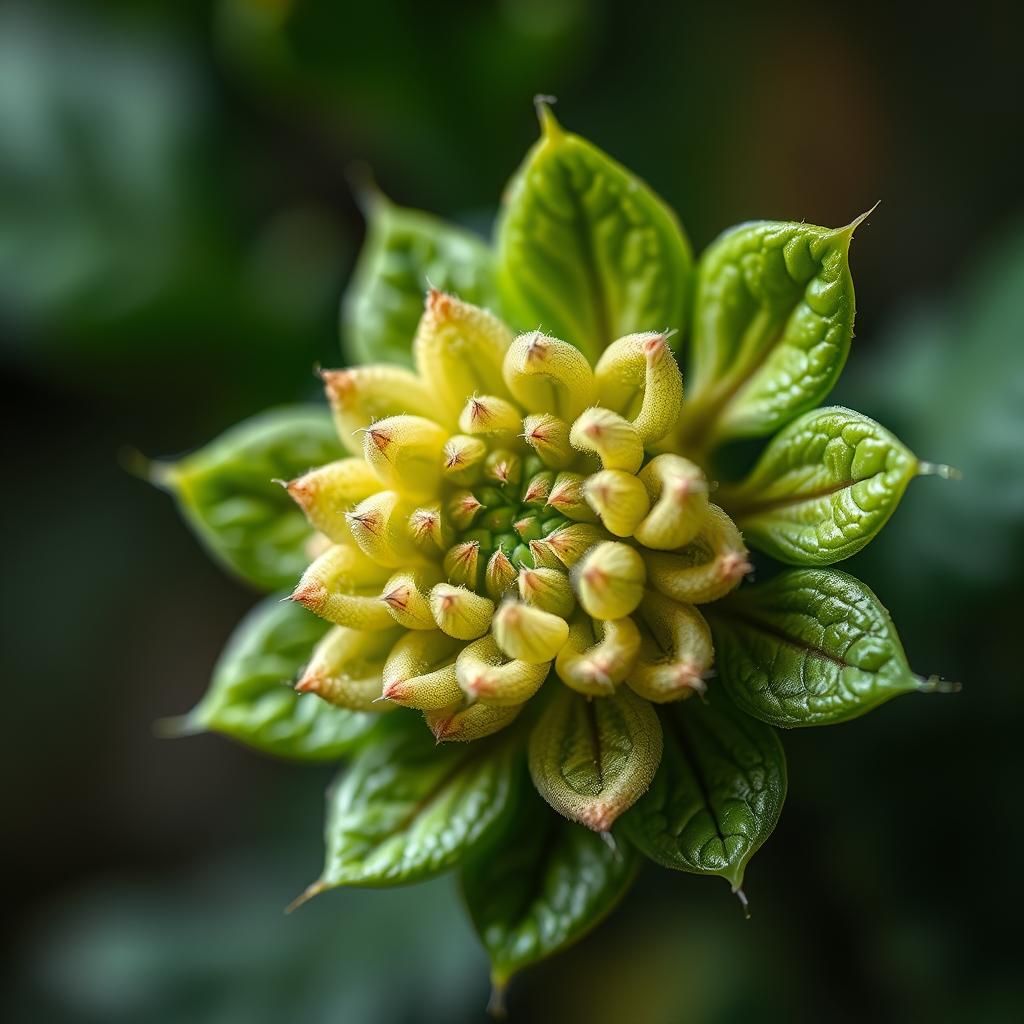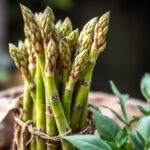Unlocking Nature: Master 'Botany in a Day the Patterns Method of Plant Identification' for Effortless Plant Recognition

In a world where nature surrounds us, the ability to identify plants effortlessly can deepen our connection to the environment. Botany in a Day: The Patterns Method of Plant Identification offers a practical approach that simplifies this process, making plant recognition accessible to everyone. By employing distinct patterns found in plant characteristics, this method allows enthusiasts and beginners alike to unlock the secrets of flora. Whether you're hiking through lush forests or cultivating a garden, mastering this technique will enhance your appreciation for the myriad of plant life around you. Dive into the art of botanical identification and explore the wonders of nature.
The Patterns Method of Plant Identification
The Patterns Method, as described in Botany in a Day, revolutionizes the way we approach plant identification by focusing on the characteristics and relationships among plant families rather than merely memorizing thousands of species names. This method encourages observers to recognize patterns in the morphology, leaf arrangement, and flower structure of plants, which can significantly simplify the process of distinguishing one species from another. By understanding the traits that define specific families, such as the presence of compound leaves or the arrangement of petals, individuals can confidently identify a wide array of plants within a relatively short period, making botany accessible and engaging for everyone.
Understanding Plant Families
The foundation of the Patterns Method lies in the exploration of plant families, which group plants that share similar morphological traits and characteristics. By familiarizing oneself with major families such as Asteraceae (the aster family) or Fabaceae (the legume family), individuals can gain insights into the common features that many species within these families exhibit. This knowledge allows for quicker identifications and strengthens one's ability to recognize plants in their natural habitats.
Morphological Characteristics
Morphological characteristics play a crucial role in the Patterns Method, as they refer to the form and structure of plants. Key elements such as leaf shape, flower type, and growth patterns are considered. By closely observing these characteristics, botanists can categorize plants based on visible traits, enhancing their ability to remember and identify them later. For instance, recognizing that maple trees often have lobed leaves can serve as a pivotal point in identifying a species.
Leaf Arrangement and Form
In the Patterns Method, leaf arrangement—whether alternate, opposite, or whorled—provides vital clues for identification. Understanding these arrangements helps to narrow down plant families and species quickly. For example, the opposite leaf arrangement in plants like Periwinkle signifies a distinct group, allowing for effective identification based on just this feature. Additionally, the shape and margin of the leaves can indicate how closely related certain plants are, reinforcing the importance of this characteristic.
Flower Structure Analysis
The structure of flowers is one of the most critical aspects of the Patterns Method in plant identification. By analyzing the number of petals, sepals, and the arrangement of reproductive organs, one can determine a plant's family. For example, plants in the Lily family (Liliaceae) often exhibit a characteristic flower structure that can easily be identified, aiding in differentiation from other families. This focused analysis enables botanists to make connections between appearance and classification.
Practical Application of the Patterns Method
The practical applications of the Patterns Method extend beyond theoretical understanding. By utilizing a field guide to practice identifying plants on walks or hikes, individuals can gain hands-on experience that reinforces their learning. Engaging with nature while applying the Patterns Method transforms plant identification into an enjoyable and rewarding activity, allowing enthusiasts to build confidence in their skills.
| Characteristic | Description | Example Plant Family |
|---|---|---|
| Morphological Traits | Physical attributes like leaf shape and growth habit | Asteraceae |
| Leaf Arrangement | Patterns of how leaves are positioned on the stem | Fabaceae |
| Flower Structure | Features of flowers, such as petal count and arrangement | Liliaceae |
| Plant Families | Groups of related plants sharing common characteristics | Rosaceae |
| Identification Process | Steps taken to recognize and classify plants | All Families |
What is the botany in a day analysis?

The botany in a day analysis is an approach designed to simplify and expedite the process of understanding plant taxonomy and characteristics. It typically involves the examination of plants based on their most distinctive features, allowing participants to identify and classify various species efficiently. This method can appeal to both amateur botanists and those looking to deepen their botanical knowledge without overwhelming details.
Understanding Plant Taxonomy
The basis of the botany in a day analysis is rooted in plant taxonomy, which is the science of naming, describing, and classifying plants. This classification is essential for:
- Organizing Biologists: Taxonomy enables scientists to communicate effectively about different species.
- Identifying Species: It helps in the identification of plants based on shared characteristics.
- Tracking Ecological Changes: Scientists can monitor changes in biodiversity and ecosystem health through well-defined taxonomy.
Key Characteristics of Plants
In botany, the analysis often focuses on key characteristics that help differentiate between various plant species. The prominent features examined include:
- Leaf Shape and Arrangement: Leaf morphology can indicate specific plant families.
- Flower Structure: The type, color, and arrangement of flowers are pivotal for identification.
- Fruit Type: Understanding fruit morphology assists in recognizing related groups of plants.
Practical Applications of Botany
The insights gained from the botany in a day analysis can be applied in multiple fields, showing its wide-ranging relevance:
- Agricultural Science: Botanists can optimize crop selection and breeding techniques.
- Environmental Conservation: This knowledge helps in the conservation of endangered plant species.
- Medicinal Research: Understanding plant properties can lead to the discovery of new medicines.
Learning Methods in Botany
The botany in a day analysis emphasizes various learning methods that contribute to its effectiveness:
- Field Studies: Engaging with plants in their natural habitats reinforces learning.
- Hands-on Identification: Practical exercises allow participants to practice their identification skills.
- Workshops and Group Discussions: Collaborative learning fosters a deeper understanding through shared experiences.
Challenges in Botanical Analysis
Despite its usefulness, the botany in a day analysis faces challenges that may hinder efficient learning:
See also:
- Diversity of Species: The vast number of plant species can be overwhelming for beginners.
- Complexity of Identification: Some species look alike and require careful examination to differentiate.
- Location Dependency: Not all geographical areas have the same species diversity, affecting the training opportunities.
How to identify plants in botany?

To identify plants in botany, one must use a systematic approach involving various techniques and tools. Plant identification is crucial for understanding ecology, taxonomy, and conservation. Below are steps and methods one can use to identify plants effectively.
Observation of Plant Characteristics
Observing the morphological characteristics of a plant is the first step in identification. Key features include:
- Leaf shape: Examine whether the leaves are broad, needle-like, or scale-like.
- Leaf arrangement: Note if leaves are opposite, alternate, or whorled on the stem.
- Flower structure: Identify the color, shape, and size of flowers, along with the number of petals.
Using Field Guides
Field guides are essential for plant identification, as they provide detailed descriptions and images of various species. When using these guides:
- Select the appropriate guide: Choose one that is specific to your geographic area.
- Understand botanical terminologies: Familiarize yourself with terms like inflorescence, petiole, and stipule.
- Follow the dichotomous keys: These tools help narrow down options based on observable traits.
Employing Technology
Modern technology offers numerous tools for plant identification. These include:
- Plant identification apps: Apps like PlantSnap or PictureThis can quickly identify plants using images.
- Online databases: Websites such as iNaturalist and the USDA PLANTS database provide extensive information about species.
- Social media platforms: Engaging with botanical communities on platforms like Instagram or Facebook can yield real-time help.
Consulting Local Experts
Engaging with local botanists or horticulturists can provide invaluable insights into plant identification. Consider:
- Joining local plant societies: These groups often hold meetings and workshops focused on plant identification.
- Visiting botanical gardens: Many gardens offer tours and classes led by knowledgeable staff.
- Participating in plant identification workshops: Hands-on experiences enhance your ability to identify various species.
Understanding Plant Ecology
A fundamental aspect of plant identification is understanding the context in which they grow. Consider:
- Habitat analysis: Identify the type of environment (e.g., wetland, forest, desert) the plant thrives in.
- Plant associations: Learn which plants are commonly found together, as this can help narrow down identification.
- Seasonal changes: Recognize that some plants may vary in appearance due to seasonal changes, affecting identification.
What is the botany in a day class?

A Botany in a Day class is an educational program designed to teach participants the essential aspects of botany, the scientific study of plants, in a condensed format. These classes typically focus on identifying various plants, understanding their biological structures, and exploring their ecological roles. Such classes are particularly aimed at individuals interested in plant identification, ecology, gardening, or herbalism, regardless of their prior knowledge.
Understanding Plant Structures
In a Botany in a Day class, one of the primary focuses is on the different structures of plants. Participants learn to recognize and understand the functions of various plant parts, including:
- Roots: The underground structures that anchor plants and absorb water and nutrients.
- Stems: The central part that supports leaves and flowers and contains vascular tissues for nutrient transport.
- Leaves: The primary sites of photosynthesis, where plants convert sunlight into energy.
Plant Classification Systems
Another significant topic covered is the classification systems used in botany. Understanding how plants are categorized helps participants identify and communicate about different species. Key points include:
- Taxonomy: The scientific classification of organisms, which includes categories like kingdom, phylum, class, order, family, genus, and species.
- Binomial nomenclature: A two-part naming system for plants that uses the genus and species names.
- Identification Keys: Tools that help in recognizing plant species based on observable traits.
Ecological Roles of Plants
Understanding the ecological roles that plants play in their environments is another critical topic. This includes:
- Producers: Plants are primary producers that create energy through photosynthesis, forming the base of the food web.
- Habitat: They provide essential habitats for various species, contributing to biodiversity.
- Climate Regulation: Plants play a vital role in carbon sequestration and influence local climates.
Field Identification Techniques
Fieldwork is often a component of Botany in a Day classes, where participants practice identification techniques. This involves:
- Observation: Using keen observation to note characteristics such as leaf shape, flower color, and bark texture.
- Field Guides: Utilizing guides or apps that help identify plants based on visual cues.
- Herbarium Practices: Learning how to collect and prepare plant samples for study and reference.
Applications in Gardening and Herbalism
Finally, the class often highlights applications of botanical knowledge in practical pursuits, specifically in areas like gardening and herbalism. Participants will learn:
See also:
- Native Plants: The importance of selecting native species for sustainable gardening that supports local ecosystems.
- Medicinal Plants: Insight into plants with health benefits, their uses, and precautions.
- Soil and Care: Understanding the relationship between plants and their soil requirements for successful growth.
Which of the following is a plant identification method?

To identify plants, various methods can be used, including:
1. Morphological Identification: This method focuses on observing and identifying plants based on their physical characteristics such as leaves, flowers, stems, and overall structure.
2. Taxonomic Keys: Taxonomic keys, or dichotomous keys, are structured tools that guide the user through a series of choices based on observable traits to determine the plant species.
3. DNA Barcoding: This advanced technique involves extracting DNA from plant samples and comparing it to a reference database to identify species based on genetic material.
4. Field Guides: Utilizing field guides provides information about plant species in specific regions, including images, descriptions, and habitat information for accurate identification.
5. Ecological Methods: This involves studying the plant within its ecosystem, considering interactions with other organisms (such as pollinators and herbivores), to help determine its identity through ecological relationships.
Morphological Identification
Morphological identification relies on the observation of observable characteristics of plants. These include traits such as leaf shape, arrangement, flower structure, and size.
- Leaf Shape: Different species have unique leaf shapes, which can be pivotal in identification.
- Flower Structure: The anatomy of flowers, including the number of petals and the arrangement, provides clear identification clues.
- Stem Characteristics: The texture, thickness, and growth patterns of stems can also differentiate species.
Taxonomic Keys
Taxonomic keys offer a systematic approach to plant identification. These tools consist of a series of statements or questions that lead the user to the correct identification based on observable plant characteristics.
- Dichotomous Structure: Keys typically provide two choices at each step, helping narrow down possibilities.
- Sequential Logic: Each choice eliminates other options, guiding the user effectively through the identification process.
- Species Information: These keys often include information about habitat, distribution, and ecological impact.
DNA Barcoding
DNA barcoding is a modern method of plant identification that uses genetic analysis. By comparing DNA sequences from a plant sample to a database of known sequences, accurate identification can be achieved.
- Sample Collection: Small samples of plant tissue are collected for DNA extraction.
- Genetic Sequencing: The plant's genetic material is sequenced to create a unique barcode.
- Database Comparison: The resulting sequences are matched against a reference database for identification.
Field Guides
Field guides are comprehensive books or resources that offer pictures and descriptions of plants within a specific region. They are invaluable for amateur and professional botanists alike.
- Visual References: High-quality images assist in visual identification alongside descriptive text.
- Habitat Specifications: Information about where a plant typically grows helps users make informed identification decisions.
- Flowering Seasons: Guides often indicate the flowering and fruiting periods, aiding in identification during fieldwork.
Ecological Methods
Ecological methods emphasize understanding the relationships between plants and their environment to assist in identification. This involves looking at a plant's interactions within its ecosystem.
- Co-occurring Species: Identifying plants alongside others that thrive in the same habitat can provide crucial context.
- Environmental Conditions: Different species are adapted to specific soil types, moisture levels, and sunlight exposure.
- Interactions with Fauna: Observing pollinator interactions or herbivore activity can guide identification based on ecological roles.
Questions from Our Readers
What is the Patterns Method in Botany?
The Patterns Method is an approach to plant identification that focuses on recognizing common characteristics and patterns among various species. By learning to identify these patterns, enthusiasts can easily categorize and understand a wide variety of plants without needing to memorize every species.
How does 'Botany in a Day' help beginners?
'Botany in a Day' is designed to simplify plant identification for beginners by breaking down the process into manageable steps, emphasizing the recognition of key features and patterns. This method allows newcomers to build a solid foundation in botany without feeling overwhelmed by complex terminologies and classifications.
See also:
Can the Patterns Method be applied in different regions?
Yes, the Patterns Method can be applied in various regions because it emphasizes the universal traits and patterns common to plants globally. This means that regardless of geographical location, individuals can use the method to identify local flora by recognizing familiar characteristics.
Is prior knowledge of botany required to use this method?
No prior knowledge of botany is required to use the Patterns Method, making it accessible to anyone interested in plant identification. The techniques and concepts presented in 'Botany in a Day' are aimed at beginners, providing an easy entry point into the world of botany.

If you want to read more articles like Unlocking Nature: Master 'Botany in a Day the Patterns Method of Plant Identification' for Effortless Plant Recognition, we recommend you check out our Gardeners category.
Leave a Reply
Related Articles